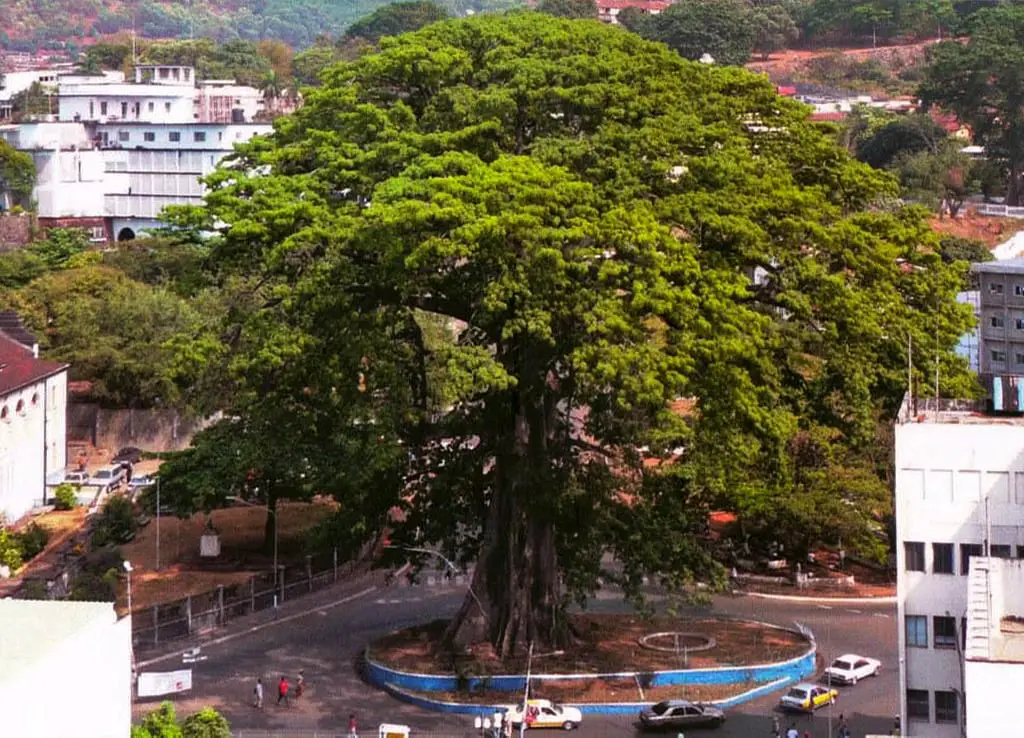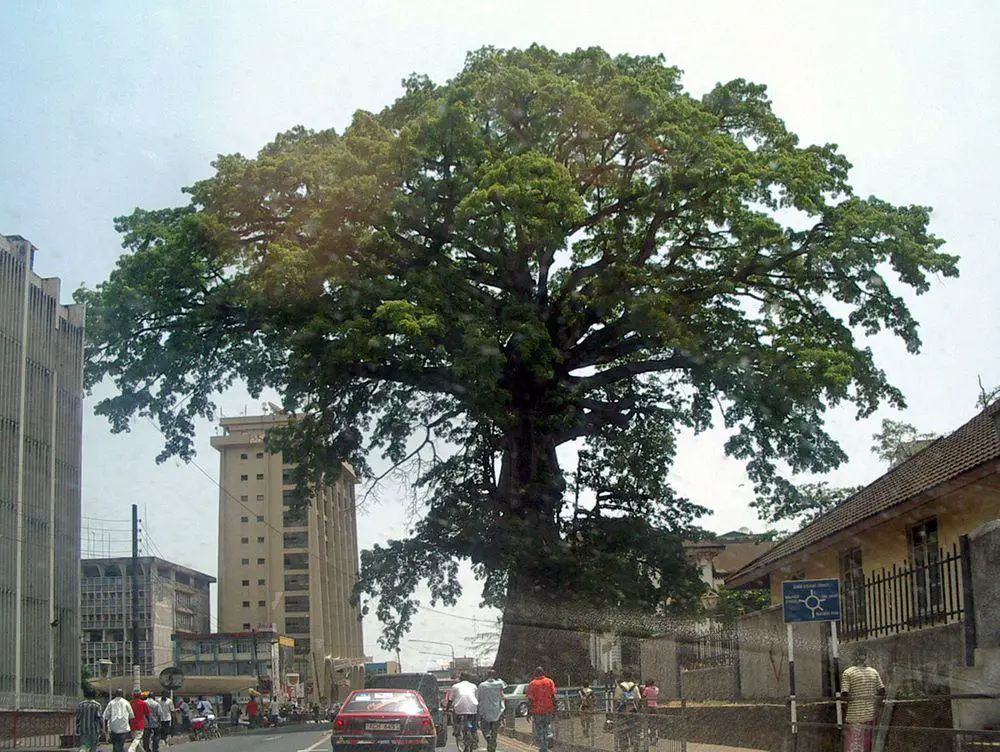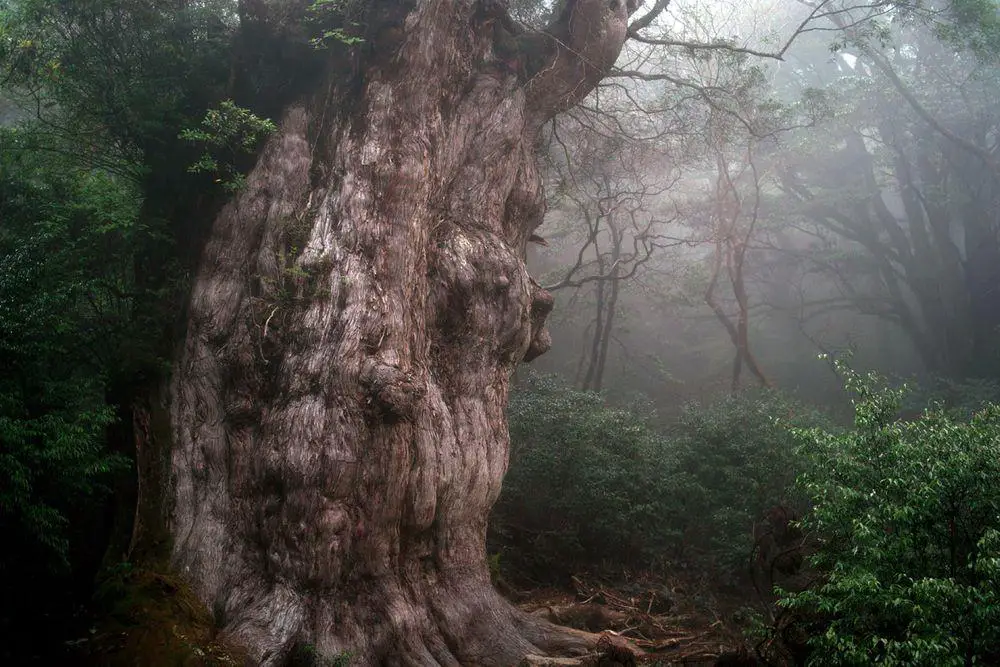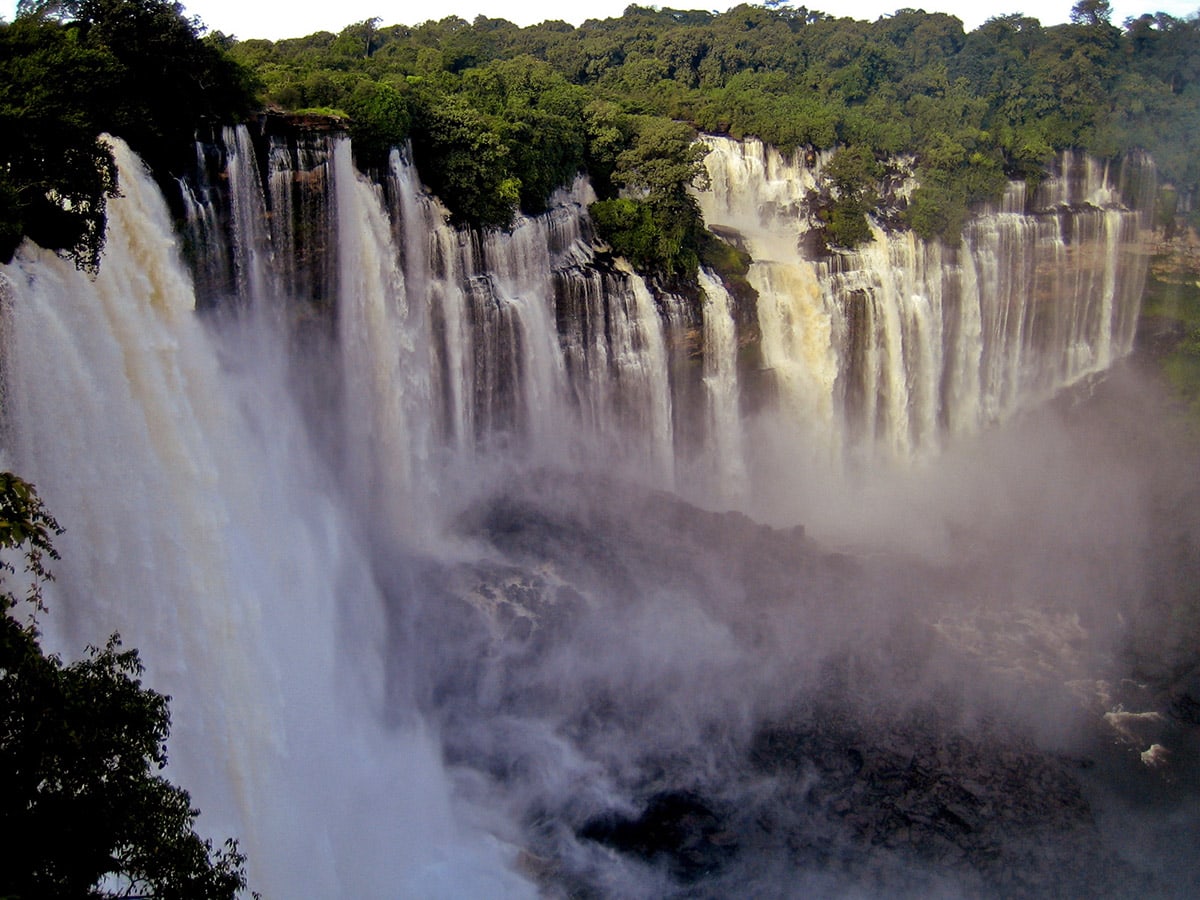Wonder
Freetown Cotton Tree

 In short
In short
In the very center of Freetown, in a roundabout surrounded by a concrete fence once stood an enormous tree – the famous Freetown Cotton Tree.
 25.3%
25.3%
GPS coordinates
Location, address
Species
Height
Girth
Map of the site
If you see this after your page is loaded completely, leafletJS files are missing.
 In detail
In detail
Freetown Cotton Tree served as a symbol for the whole nation of Sierra Leone.
Ceiba pentandra
Cotton tree (Ceiba pentandra) grows both in tropical America and tropical Africa. It is not entirely clear where the tree appeared naturally and where it was brought by people – but it is possible that ceiba originally grew in Western Africa and could be brought elsewhere by ocean streams. Or vica verse… by streams from America to Africa. Who knows?
Ceiba (kapok, cotton tree) grows up to 77 m tall (unchecked height of one tree in Costa Rica) and has impressive buttresses characteristic of rainforest trees. Trunk above the buttresses often exceeds a diameter of 3 m.
Seed ponds of this tree contain strong and light fiber, which gave a name to the tree – "cotton tree". The collection of this fiber is not easy work but the fiber serves as an excellent filling for mattresses, children’s toys, pillows.

Return of slaves to Africa
Thousands of black people (then slaves) participated in the American War of Independence. They got a promise that veterans of war will be free people – but white people were filled with prejudice and too often the promise was broken.
Many war veterans with their families decided to return to their home country in Western Africa. A group of such people arrived at the site of present-day Freetown, founding the city on March 11, 1792.
The giant tree of Freetown
According to a legend the black settlers disembarked from the ship and went up to a giant tree. They held a thanksgiving service under this tree, thanking God for their deliverance to free land. Now this tree is in the center of Freetown.
There are older stories about slave markets held under this tree – but there is also a contradicting story that the tree was planted by the freed slaves who brought it from America.
It is assumed that this enormous tree was at least 500 years old. The Cotton Tree dominated above the surrounding houses and its height was 70 m. The diameter, reportedly, was 15 m – what seems to be an exxageration. A bat colony lived in the tree.
Symbol of Sierra Leone
The Cotton Tree was seen as a historical symbol of Freetown. Even more – it was seen as a symbol of Sierra Leone by its natives who live abroad.
This silent giant was a witness of the history of Sierra Leone indeed. The National Museum of the country was founded under the tree in 1957, in the former Cotton Tree Station. Tree saw the suffering and hope of people in the dark times of the Sierra Leone civil war in 1991 – 2002, including the brutal invasion in the city in January 1999.
Many local people attributed Cotton Tree to magical properties. Ceiba trees have a special meaning for local cultures, e.g. they were planted along the fortifications, which were built in the times of the slave trade.
Each life ends one day. On 24 Mar 2023 the tree fell during a heavy rain storm, leaving the lower part of its giant trunk. There is a plan to include the remnants of the tree in a monument in this site.
References
- Ferdinand de Jong and Michael Rowlands. Reclaiming Heritage – Alternative Imaginaries of Memory in West Africa. 2007.
 Linked articles
Linked articles

Trees
The category includes some of the most impressive and interesting separate trees in the world. The total number of tree species in the world still is a wild guess – maybe 10,000 and maybe 100,000 but most likely somewhere in between. Every month there are reported new tree species from the whole world, including Western Europe.

Wonders of Sierra Leone
Sierra Leone is rich in both natural and man-made landmarks. Not too many know that in the country are located several abandoned fortified towns built by local people to escape from slave traders.

Wonders of Africa
Africa has many outstanding wonders and some of the most surprising ones are the heritage of Egyptian civilization, the vernacular architecture of the Sahel region, tropical ecosystems, and others.
 Recommended books
Recommended books
From Freeborn to Freetown & Bac
When twenty-two-year-old Patrick O’Leary stepped off the plane in Sierra Leone, West Africa in January 1967, he was dressed for the snowstorm he had left in Freeborn County, Minnesota a few days earlier. It didn’t take long for him to realize his rural Catholic upbringing, training for Tanzania, his original Peace Corps assignment, and an earlier road trip to Key West Florida–in a Cadillac hearse–had only partially prepared him for two years living alone in the village of Binkolo.

